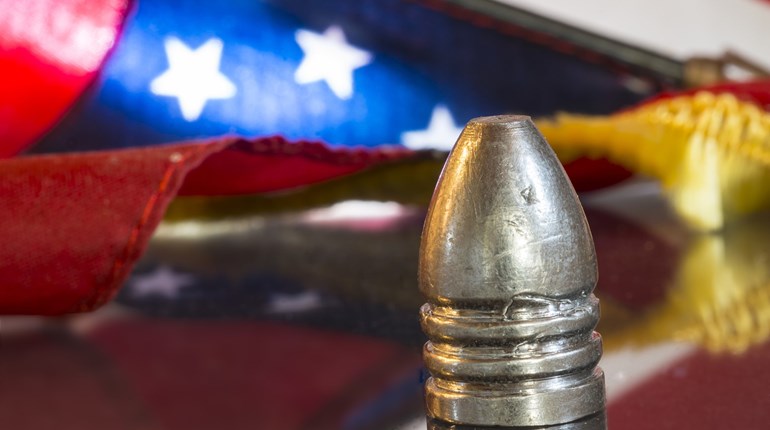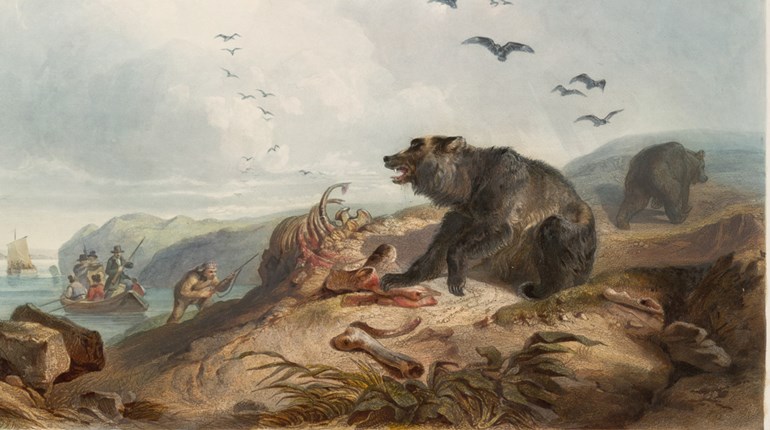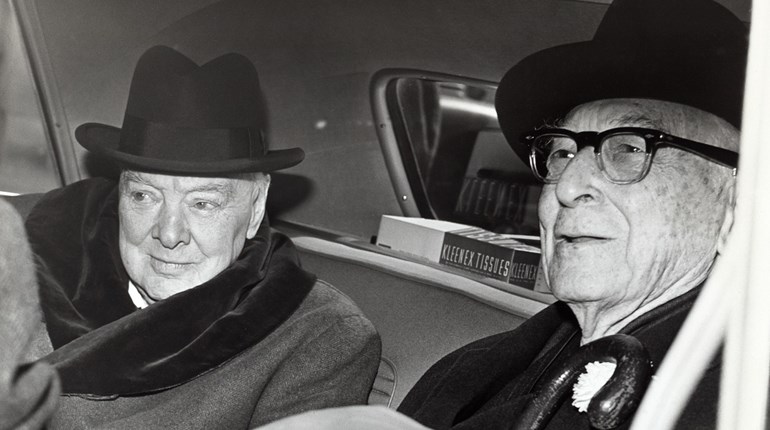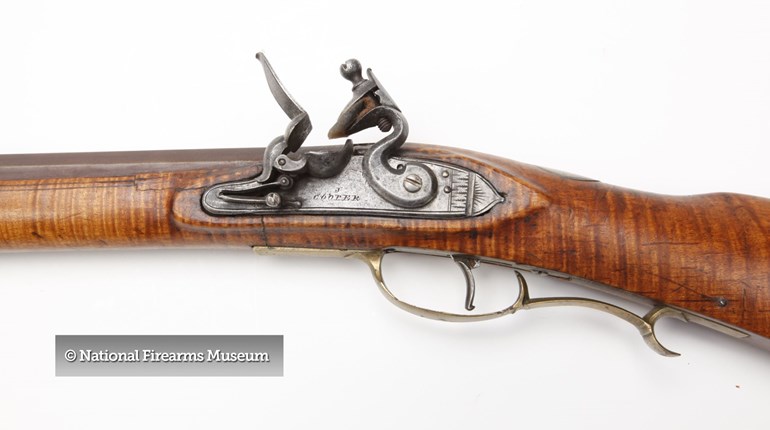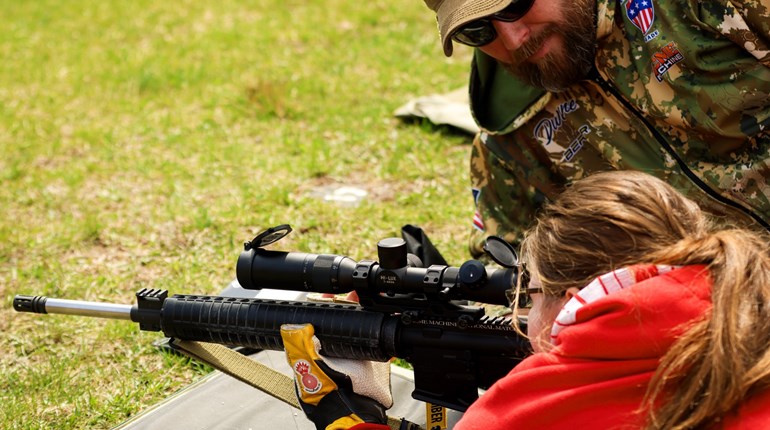** When you buy products through the links on our site, we may earn a commission that supports NRA's mission to protect, preserve and defend the Second Amendment. **
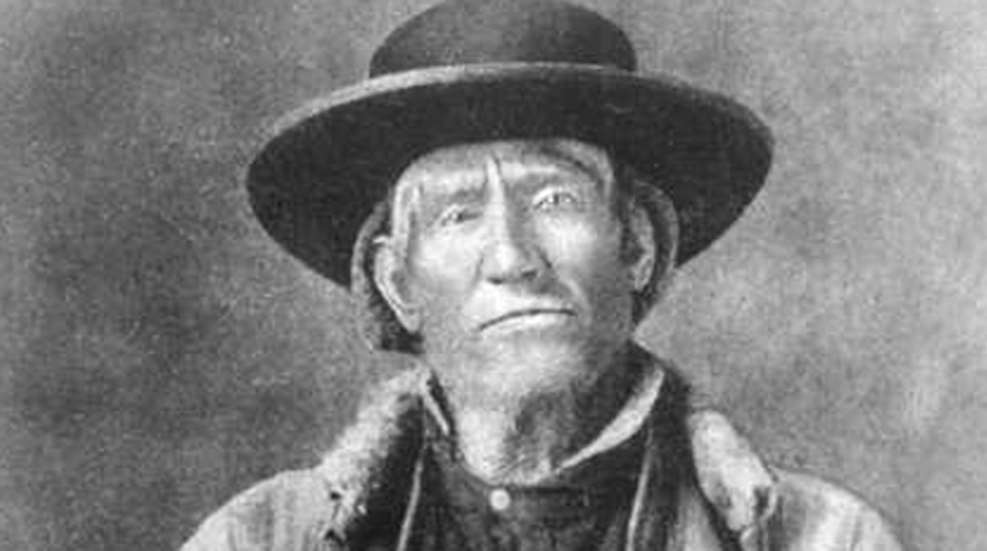
Jim Bridger (1804-1881) had a rough start in life. When he was just eight years old, his father moved their five-member family west from Virginia to Missouri, settling along the Mississippi River near St. Louis. But within five years, Bridger’s father, mother and a sibling passed away from various ailments, leaving just him and his sister. She subsequently went to live with an aunt, and young Jim was apprenticed to a blacksmith, pumping the forge bellows day after day.
The blacksmith was a kindly man, treated Jim well, and taught him the blacksmithing trade. But what Jim liked best about his apprenticeship was hearing the tales told by frontiersmen who occasionally stopped by the shop for needed equipment repairs. They spoke of the fur trade opening up in the “shining mountains” far to the west, and Jim Bridger made up his mind that one day he would see those mountains.
Bridger’s opportunity came during the spring of 1822. Finishing up his blacksmithing apprenticeship and looking for work, he heard of a beaver-trapping expedition headed up the Missouri River, commanded by William Ashley and Andrew Henry. Bridger was inexperienced and still only in his late teens, yet tall, muscular and eager to learn wilderness skills. As a result, he was hired.
One of the older members of the crew was Hugh Glass. Glass was well-seasoned in wilderness survival, but made a serious mistake one day while hunting for meat for the expedition’s crew. He casually walked into a river thicket where he could see only a few feet in any direction, and paid the price. He was suddenly and viciously attacked by a grizzly protecting her two cubs.
Glass was mauled so severely by the bear that no one expected him to survive. Yet day after day he continued to breathe, moaning and slipping in and out of consciousness. As a result of the situation, Ashley and Henry knew their group was in serious danger. The expedition was in hostile Indian country and needed to keep moving, but Glass, being carried on a stretcher, was slowing them down considerably.
The leaders discussed the situation, then asked for two volunteers to stay behind and bury Glass once he died. The volunteers could then catch up with the main group later. It took offering extra pay for someone to accept the near-suicide assignment, but finally John Fitzgerald and young Jim Bridger stepped forward.
Several days later, Hugh Glass continued clinging to life. The older Fitzgerald eventually convinced Bridger they should leave Glass, that he would soon die anyway. Consequently, the pair dug a shallow grave, laid Glass in it, and covered him with a buffalo robe. They then took his rifle, knife and other equipment, leaving him to die alone in the wilderness.
Somehow, miraculously, Hugh Glass survived. First crawling, then limping, then walking, he arrived weeks later 200 miles away at Fort Kiowa, seeking revenge on the two men who had left him.
He found Jim Bridger first, but Bridger was so contrite, repentant and embarrassed that Glass forgave him. Fitzgerald was next on the list, but by then he had joined the U. S. Army, and Glass knew that if he killed him he’d be hanged for the crime. So after confronting Fitzgerald and giving him a well-deserved tongue lashing, Hugh Glass simply walked away.
You can read the entire story of Hugh Glass here. To see a current film rendition, the movie The Revenant was released earlier this year. If you’d rather read the book the movie was adapted from, it’s also titled The Revenant, and was written by author Michael Punke.
After the Hugh Glass incident, Jim Bridger’s life began taking a turn for the better. Despite being illiterate all his life, he became very successful in the fur trade. For instance, in 1830 Bridger and four partners purchased the Rocky Mountain Fur Company from William Ashley for $16,000, a tremendous amount of money at the time.
But Jim Bridger is likely best remembered as an explorer. Possessing a nearly photographic memory of mountains, rivers, ridges, passes and wilderness trails, he knew the American West like few other mountain men, and as a result was always in demand as a guide.
One of Bridger’s most eccentric guiding clients was Sir George Gore, an English sportsman and big-game hunter. In 1854, Gore arrived in the West with some 50 servants, including cooks, valets, horsemen and dog handlers. After outfitting in St. Louis, Gore found his way to the Wyoming Territory and Fort Laramie, where he met Jim Bridger. Upon hearing Bridger’s many tales of the mountains, he immediately hired him as a hunting guide.
Gore’s daily routine was to sleep until about mid-morning, then have a leisurely bath followed by a generous breakfast. He would then ride off to hunt, often alone, sometimes staying afield late into the evening. Gore often requested that Bridger join him for supper, and would read to him following the meal.
One night, Gore read aloud Sir Walter Scott’s account of the Battle of Waterloo, asking the uneducated Bridger what he thought. In typical mountain-man jargon Bridger responded, “Them Britishers must a fit better than they did to New Orleans where Old Hickory give ‘em the forkedest sort of chainlightnin’ you ever did see—and you can just go yer pile on it, Mr. Gore.”
To translate, Old Hickory was the nickname of Major General Andrew Jackson, commander of American forces at the Battle of New Orleans, and “go yer pile” meant to bet everything you had. By the end of the 18-month hunting trip under the guidance of Bridger, Sir George had shot some 40 grizzly bears, 2,500 buffalo, as well as untold numbers of deer, elk, antelope and other game.
Jim Bridger had three wives during his lifetime, all Indian women. Later in life, he bought a farm in Missouri and lived there until he passed away in 1881 at the age of 77. A natural leader, Jim Bridger was described as always serious, yet always friendly.
Fellow mountain man Jedediah Smith said of Bridger that he possessed the skills of the angel Gabriel. Henceforth, Jim Bridger was forever known as “Old Gabe.” Today, a dozen or more locations in the West are named for Jim Bridger, one being Bridger-Teton National Forest in northwest Wyoming.
The blacksmith was a kindly man, treated Jim well, and taught him the blacksmithing trade. But what Jim liked best about his apprenticeship was hearing the tales told by frontiersmen who occasionally stopped by the shop for needed equipment repairs. They spoke of the fur trade opening up in the “shining mountains” far to the west, and Jim Bridger made up his mind that one day he would see those mountains.
Bridger’s opportunity came during the spring of 1822. Finishing up his blacksmithing apprenticeship and looking for work, he heard of a beaver-trapping expedition headed up the Missouri River, commanded by William Ashley and Andrew Henry. Bridger was inexperienced and still only in his late teens, yet tall, muscular and eager to learn wilderness skills. As a result, he was hired.
One of the older members of the crew was Hugh Glass. Glass was well-seasoned in wilderness survival, but made a serious mistake one day while hunting for meat for the expedition’s crew. He casually walked into a river thicket where he could see only a few feet in any direction, and paid the price. He was suddenly and viciously attacked by a grizzly protecting her two cubs.
Glass was mauled so severely by the bear that no one expected him to survive. Yet day after day he continued to breathe, moaning and slipping in and out of consciousness. As a result of the situation, Ashley and Henry knew their group was in serious danger. The expedition was in hostile Indian country and needed to keep moving, but Glass, being carried on a stretcher, was slowing them down considerably.
The leaders discussed the situation, then asked for two volunteers to stay behind and bury Glass once he died. The volunteers could then catch up with the main group later. It took offering extra pay for someone to accept the near-suicide assignment, but finally John Fitzgerald and young Jim Bridger stepped forward.
Several days later, Hugh Glass continued clinging to life. The older Fitzgerald eventually convinced Bridger they should leave Glass, that he would soon die anyway. Consequently, the pair dug a shallow grave, laid Glass in it, and covered him with a buffalo robe. They then took his rifle, knife and other equipment, leaving him to die alone in the wilderness.
Somehow, miraculously, Hugh Glass survived. First crawling, then limping, then walking, he arrived weeks later 200 miles away at Fort Kiowa, seeking revenge on the two men who had left him.
He found Jim Bridger first, but Bridger was so contrite, repentant and embarrassed that Glass forgave him. Fitzgerald was next on the list, but by then he had joined the U. S. Army, and Glass knew that if he killed him he’d be hanged for the crime. So after confronting Fitzgerald and giving him a well-deserved tongue lashing, Hugh Glass simply walked away.
You can read the entire story of Hugh Glass here. To see a current film rendition, the movie The Revenant was released earlier this year. If you’d rather read the book the movie was adapted from, it’s also titled The Revenant, and was written by author Michael Punke.
After the Hugh Glass incident, Jim Bridger’s life began taking a turn for the better. Despite being illiterate all his life, he became very successful in the fur trade. For instance, in 1830 Bridger and four partners purchased the Rocky Mountain Fur Company from William Ashley for $16,000, a tremendous amount of money at the time.
But Jim Bridger is likely best remembered as an explorer. Possessing a nearly photographic memory of mountains, rivers, ridges, passes and wilderness trails, he knew the American West like few other mountain men, and as a result was always in demand as a guide.
One of Bridger’s most eccentric guiding clients was Sir George Gore, an English sportsman and big-game hunter. In 1854, Gore arrived in the West with some 50 servants, including cooks, valets, horsemen and dog handlers. After outfitting in St. Louis, Gore found his way to the Wyoming Territory and Fort Laramie, where he met Jim Bridger. Upon hearing Bridger’s many tales of the mountains, he immediately hired him as a hunting guide.
Gore’s daily routine was to sleep until about mid-morning, then have a leisurely bath followed by a generous breakfast. He would then ride off to hunt, often alone, sometimes staying afield late into the evening. Gore often requested that Bridger join him for supper, and would read to him following the meal.
One night, Gore read aloud Sir Walter Scott’s account of the Battle of Waterloo, asking the uneducated Bridger what he thought. In typical mountain-man jargon Bridger responded, “Them Britishers must a fit better than they did to New Orleans where Old Hickory give ‘em the forkedest sort of chainlightnin’ you ever did see—and you can just go yer pile on it, Mr. Gore.”
To translate, Old Hickory was the nickname of Major General Andrew Jackson, commander of American forces at the Battle of New Orleans, and “go yer pile” meant to bet everything you had. By the end of the 18-month hunting trip under the guidance of Bridger, Sir George had shot some 40 grizzly bears, 2,500 buffalo, as well as untold numbers of deer, elk, antelope and other game.
Jim Bridger had three wives during his lifetime, all Indian women. Later in life, he bought a farm in Missouri and lived there until he passed away in 1881 at the age of 77. A natural leader, Jim Bridger was described as always serious, yet always friendly.
Fellow mountain man Jedediah Smith said of Bridger that he possessed the skills of the angel Gabriel. Henceforth, Jim Bridger was forever known as “Old Gabe.” Today, a dozen or more locations in the West are named for Jim Bridger, one being Bridger-Teton National Forest in northwest Wyoming.













